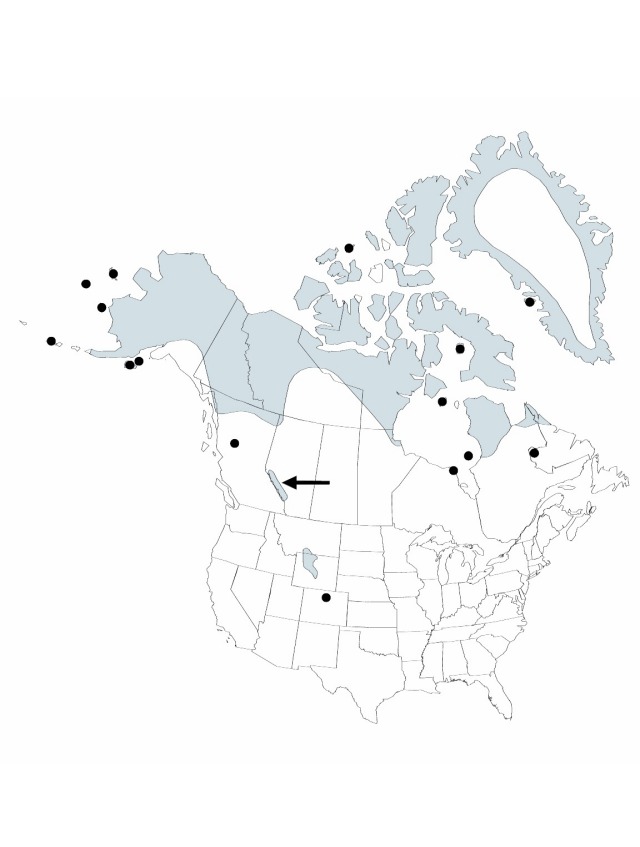Herbs, perennial, loosely cespitose, 0.25–1.6 dm. Culms nearly terete. Cataphylls 2–4. Leaves basal, 1–4; sheaths loose; auricles absent or rounded, 0.5 mm; blade imperfectly septate, ascending, nearly terete, 2–7 cm × 0.5–1.5 mm. Inflorescences heads, 1–2(–4)-flowered; primary bracts much longer than inflorescence. Flowers: tepals brown to blackish, oblong, 2.5–4 mm, apex obtuse; outer and inner series nearly equal; stamens 6, filaments 1–1.5 mm, anthers 0.5–0.7 mm; style deciduous, 0.3–0.4 mm. Capsules pale with dark purplish valve margins, pseudo-3-locular, oblate to narrowly ovoid, 4–5.5 × 1.7–2.3 mm, exceeding perianth, apex retuse. Seeds yellowish tan, fusiform-ovoid, 0.7–0.9 mm, short tailed. 2n = 120.
Phenology: Flowering and fruiting summer.
Habitat: Wet tundra and mossy margins of ponds and streams, wet gravel and open, rocky slopes in alpine zones
Elevation: 10–3400 m
Distribution

Greenland, Alta., B.C., Man., Nfld. and Labr. (Labr.), N.W.T., Nunavut, Ont., Que., Yukon, Alaska, Colo., Mont., Wyo., n Europe, Asia.
Discussion
Selected References
None.